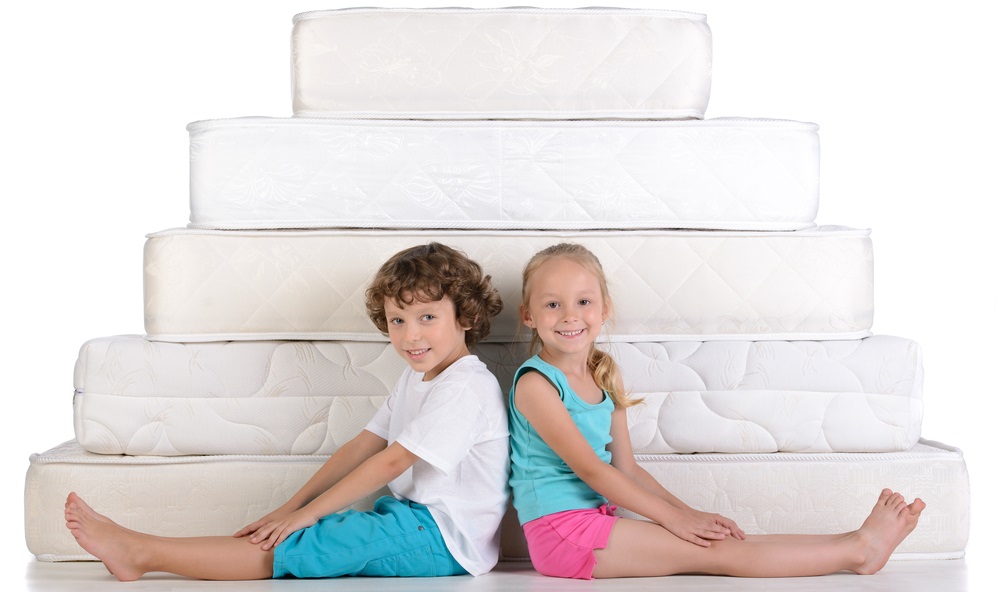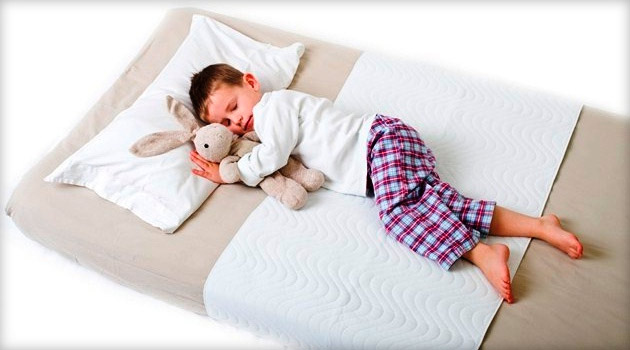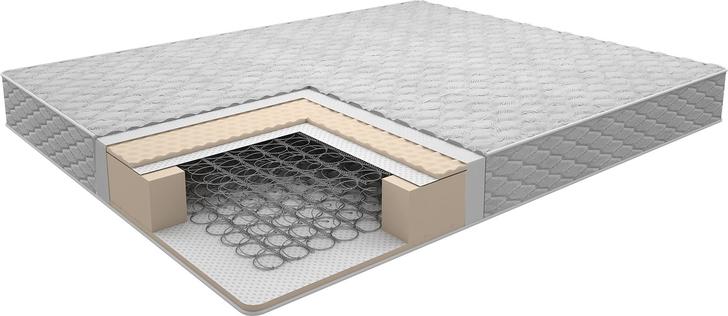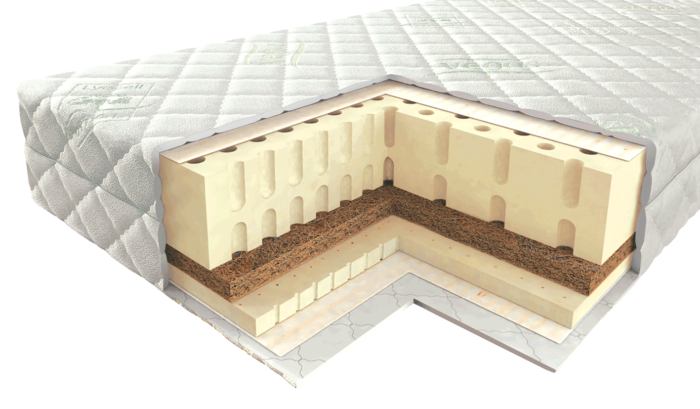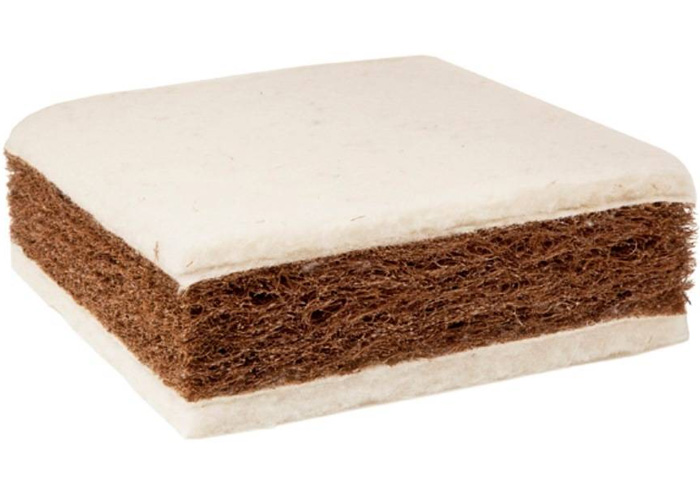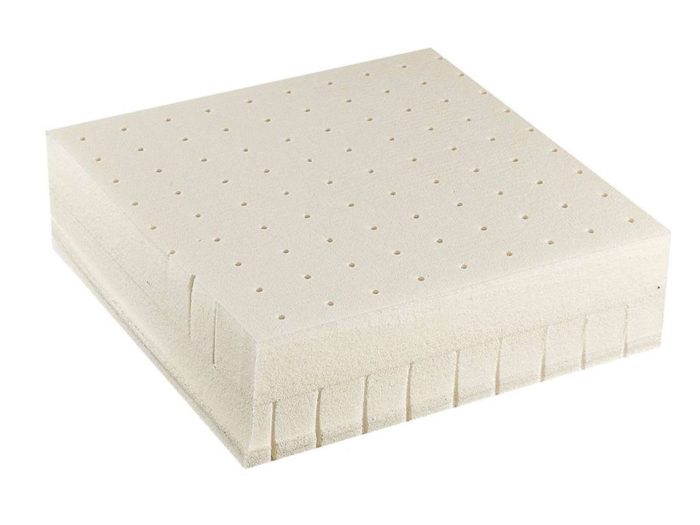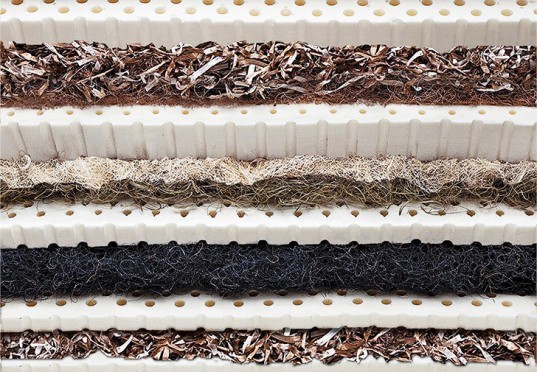Kids spend most of their lives in a dream, so it’s important to provide them with comfort at this time. Many manufacturers of mattresses offer children’s models, and there are companies that specialize specifically in the release of only such mattresses. Children’s mattresses must meet a number of requirements and be carefully selected. Let’s talk about what children’s mattresses exist.
Features of a children’s mattress
A child is more vulnerable than an adult, so the environment surrounding him must be as safe as possible. This applies to the sleeping place. Children are prone to allergic reactions, which are sometimes caused by unexpected reasons.
To avoid this, you need to choose a quality mattress. Famous manufacturers make children’s mattresses from environmentally safe and hypoallergenic materials, which excludes the appearance of irritation.
The internal components are also important. Many people appreciate natural fillers but they can also cause allergies. A good alternative to them is synthetic materials, some of which don’t ignite, which is an indisputable advantage.
In addition to the above qualities, a child’s mattress should perform the most important function – to ensure a comfortable and correct position of the body during sleep. The child, depending on the age, requires a different stiffness of the sleeping surface. It provides the use of appropriate fillers or a combination of several.
Types of children’s mattresses
All children’s mattresses can be divided into two large groups – spring and spring-less. There are also inflatable but they aren’t common and used without a bed, so the emphasis will be on the first two. The first can have a block of dependent or independent springs. The second – only the layers of filler. Each of the types has its own characteristics but for a child-forming organism, a spring-less mattress is preferable. Fluctuations of springs can adversely affect the formation of the spine.
Spring mattresses for children
In children’s mattresses, the block of dependent springs “Bonnel” is often used. Its feature is the continuous weaving, thanks to which each spring is connected with the previous and subsequent. It is considered less durable, and the orthopedic effect is worse. However, in combination with coconut gives a good stiffness, which is necessary for young children.
In addition, mattresses with dependent springs are cheaper. And if you plan to take a mattress for a child for a couple of years, you can consider this option. A block of independent springs is a progressive innovation. In it, each spring is placed in a separate cover and works independently of the others. It provides the best orthopedic effect and, of course, is preferable for a child of middle age and older than Bonnel.
Advantages of spring mattresses
- It is more comfortable to sleep – they feel softer, they create a shaking effect.
- Long service life – a quality mattress will last at least 10 years.
Disadvantages
- In a spring block, dust accumulates, which can provoke an allergy.
- Because of the metal springs in the mattress, static electricity accumulates.
- Over time, the springs rust, begin to squeak.
- Jumping, children can break the springs.
- Not the best way affect the children’s spine.
Springless mattresses
Modern mattresses without springs can have different layers of filler. From natural, manufacturers often use coconut coir, latex, horse hair, seaweed, buckwheat. They are quite expensive, so producers offer a number of synthetic fillers: polyurethane foam, foam with a memory effect, foam rubber.
All manufacturers assure that artificial fillers are hypoallergenic and non-toxic. But often buyers complain of a pungent smell, the appearance of an allergy in toddlers. Especially it concerns materials in inexpensive mattresses. Therefore, if you already choose a mattress for your child, it is better not to save and choose a natural filler.
Benefits
- More easy to care for.
- Don’t accumulate dust.
- They can roll up and weigh less.
- Don’t accumulate static electricity.
- Noiseless.
- Good evaporate moisture.
- Quality natural filler will last about 15 years.
Disadvantages
The minus of the springless mattress is only one: the ratio of cost and materials. High-quality natural fillers are expensive. And inexpensive mattresses often don’t please quality and service life. Although children need to change their stiffness, depending on their age, so it is useless to look for a mattress “for ages”.
Fillers in children’s mattresses
The above fillers can be used in both spring and springless models. Therefore, we will dwell on their characteristics in more detail.
Natural Fillers
Coconut fiber
Coconut fiber, or coir – one of the most common fillers for children’s mattresses. It is made from coconut fibers, which are then bonded together. Usually, latex is used for this, natural or artificial. Of course, natural for children is preferable.
The resulting coconut filler has a high rigidity, in the cold season retains heat, doesn’t soar in the summer. Among the shortcomings of coconut can be distinguished by high cost and fragility. Over time, it begins to crumble and jumping over the mattress child speeds up the process of destruction. In addition, many parents found this filler too hard.
Cotton wool
Cotton fillers are now receding into the background, which isn’t surprising. They are cheap but absolutely inefficient. There is no orthopedic effect but soon the filler rolls down and causes discomfort during sleep. At the same time, it absorbs moisture well but it doesn’t evaporate well.
Natural Latex
The material is obtained from the milky juice of the Hevea tree. Then it is subjected to thermal or chemical treatment, foamed, poured into a special shape, providing a porous structure. Latex has good elasticity, is durable, has antiseptic properties. It doesn’t like too much humidity and temperature, quite expensive.
Horsehair
The pressed material has high strength and elasticity. It has excellent air permeability, it evaporates moisture well. Horsehair doesn’t deform with time, doesn’t accumulate dust. However, it is not cheap and can cause allergies.
Seaweed
Eco-friendly filler, which has an aroma-effect. It doesn’t rot, doesn’t accumulate moisture and condensate, contains useful trace elements. However, it is quite expensive, soft and short-lived. Considering the loads to which children’s mattresses are exposed, be prepared to find a new surface for sleep soon.
Buckwheat
Regulates blood circulation and has a micro-massage effect. The material is natural and relatively inexpensive. But you can meet reviews about the appearance of small insects in such a filler.
Artificial Fillers
Polyurethane foam
The artificial latex substitute is practically inferior to it in characteristics but less durable. In addition, it can cause an allergy in a child if the mattress is too cheap. However, high-quality polyurethane foam supports the child’s backbone, so if you are sure of the manufacturer, it makes sense to consider this option.
Foam with memory effect
The material is similar in composition to polyurethane. It has an enveloping structure, due to which it adapts to any position of the body of the sleeper. Such a foam has a good orthopedic effect but for a child, it should be chosen only if you are sure of the quality.
Foam
Cheap soft filler, which initially well restores the shape. However, it quickly deforms, crumbles and blurs with time. In addition, it absorbs moisture well and can serve as an excellent medium for the development of bacteria.
How to choose a baby mattress
Choosing a mattress for a child, decide on several criteria: rigidity, the presence of one or two sides, a cover. Many children’s mattresses have two sides of stiffness. They are convenient in that they allow you to change the degree of rigidity as the child grows up. For example, you can often find mattresses with coconut on one side and latex on the other.
Often a child cannot, like an adult, in a store try out a mattress and say which one is most convenient for him. From this point of view, bilateral, of course, is more convenient, although more expensive. Children from birth to two years need mattresses with a high degree of rigidity. At the age of 2-6 years, a softer, springless mattress will do.
A 6-14-year-old child can look for a mattress with medium or high stiffness. In the older age, we can already consider models with a spring block. Please note that the mattress must match the size of the crib and have protective edges. If the child stands on the edge, his leg should not fall between the edge of the mattress and the side of the bed.
Pay attention to the material of the cover for the child cotton, natural fabrics are better. Look for a model in which the cover can be removed and washed. Many manufacturers impregnate the outer cover with additional antibacterial, heat-resistant impregnations. Do you want to know more about children’s mattresses? Read the article 9 Best crib mattresses for your baby.

